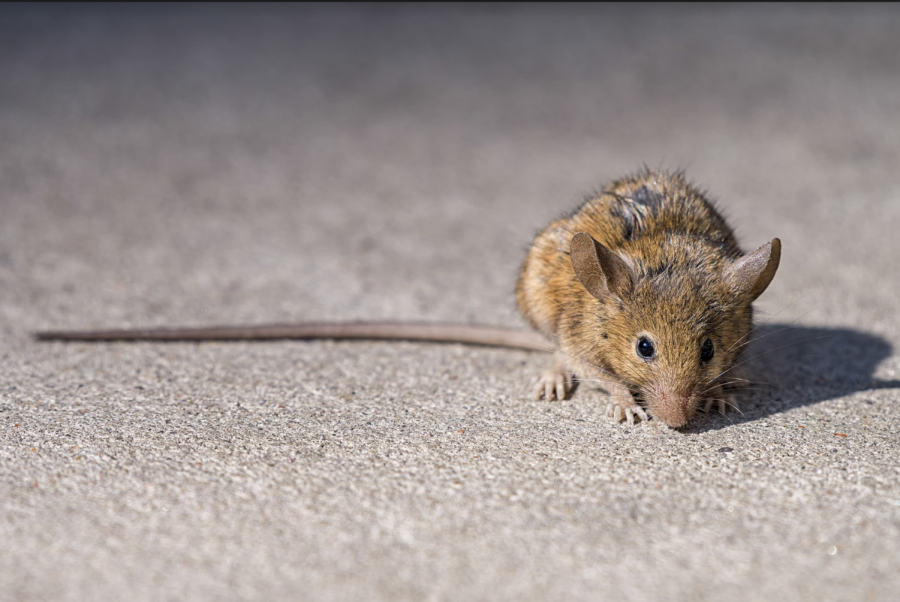Fordham Research Repels NYC’s Rodents
G. SCOTT SEGLER VIA WIKIMEDIA COMMONS
While rats may reign as New York’s rodent rulers, Fordham researchers are working to help take back the city from their paws.
October 16, 2019
Whether they’re scurrying across subway tracks, darting through green spaces or lurking in alleyways, there’s no denying the extent of the rodents’ presence throughout the city. With rat populations continuing to rise, concerns over the issue are growing in tandem with the infestation itself. However, several Fordham researchers are at the forefront of a scientific study aimed to control the issue.
A new study led by researchers at Fordham, Columbia and Arrow Exterminators, Inc., proposed one possible solution to the growing rat infestation — using rat pheromones, chemicals naturally secreted by the animals to trigger social responses, to manipulate the behavior of New York’s seemingly fearless urban vermin.
The researchers began by capturing a colony of wild rats at a waste recycling center in Brooklyn, and implanting them with microchips. The team then set up an array of sensors around various surfaces at the same recycling center, using radio-frequency identification sensors to avoid GPS interference. These sensors were placed in both high- and low-risk areas (determined by proximity to small shelters and areas known to be stalked by feral cats) to determine whether risk played a role in the results. The colony was then released back into the center, and their movements were tracked over two separate two-month periods for male and female scents.
The study found that rats reacted differently to male and female pheromones. Regardless of risk, rats — particularly males — were observed to “scout out” areas with male pheromones, often later avoiding them. Areas sprayed with female pheromones, however, were visited significantly more often than male-sprayed areas. According to their press statement, “Rats briefly visited male scents equally in exposed and sheltered areas, and then stayed away. Female scents, however, were visited significantly more often than male scents (0.2 visits/day compared to 5.02 visits/day).”
One rat whom researchers named “Molly” was observed to be equally attracted to male and female pheromones, making daily visits that were characterized by “exaggerated behavior” such as rapidly circling the area.
Michael H. Parsons, Ph.D., a visiting research scholar at Fordham University and a member of the research team, explained that it would be impossible for the rats to develop immunity to the pheromone technology after repeated exposure and the passing of time. This makes the pheromone technology significantly more effective than conventional rat traps, which rats have been able to outsmart.
“If rats became ‘immune’ to their own pheromones, then they would be unable to select a mate or maintain a social hierarchy among groups of rats,” he said. “By logic, any rat disinterested in pheromones would be at a strong disadvantage and her genes would likely be removed from the population.”
Matthew Combs, Ph.D., leaves more room for doubt. While he believes in the efficacy and potential success of using pheromones to control the rat problem, he warned of the rodents’ infamously unpredictable nature. “Rats are quick to learn from their environment and there is a chance they could learn to avoid certain smells, particularly if there is fine-level variation in the scent itself that we don’t yet understand,” he stated. “In the end, it would be a question of which will win out: a deep, evolutionary drive to locate a specific scent, or a recent and learned behavioral aversion to avoid scents associated with danger.”
Both Parsons and Combs believe the study can be improved with greater access to “urban properties,” such as storage areas in urban parks, as well as waste recycling centers and landfills — all of which are suitable environments for future experiments. With regards to the use of pheromones, Combs would like to see researchers identify the individual molecules that produce the rats’ behavioral responses, which could lead to developments in rat deterrents such as bait and immuno-contraceptives.
Despite experiments like this, the rats’ dominion over New York City continues to grow. In May, The New York Times reported that 17,353 calls were made to NYC’s 311 non-emergency hotline in 2018 compared to just 12,617 in 2014: a 38% increase. Jason Munshi-South, associate biology professor at Fordham, blamed the infestation on the practice of leaving garbage bags out in the streets until it’s collected in the morning, thus giving rats “an all-night buffet.”















BlueCat49 • Oct 27, 2019 at 5:54 pm
Far be it for government to actually SOLVE the problem by collecting and disposing of trash. Of course, trash collection should NOT be a government function. The private sector would much more effectively solve the problem. But heck, kill the rats and then the cats. Have it your way.
Rocky • Oct 19, 2019 at 12:31 pm
You cant run from the truth! worried about loosing your funding ! Its already been done!
Ted Wilky • Oct 18, 2019 at 4:31 pm
Interesting article but its been accomplished by a south Florida company called infinity worldwide. They received the patented on it too. Its called Infinity Shields. The solid waste industry uses it to drive rats out of the trucks and transfer sites. The rats don’t chew the wires in the trucks anymore and its all green!